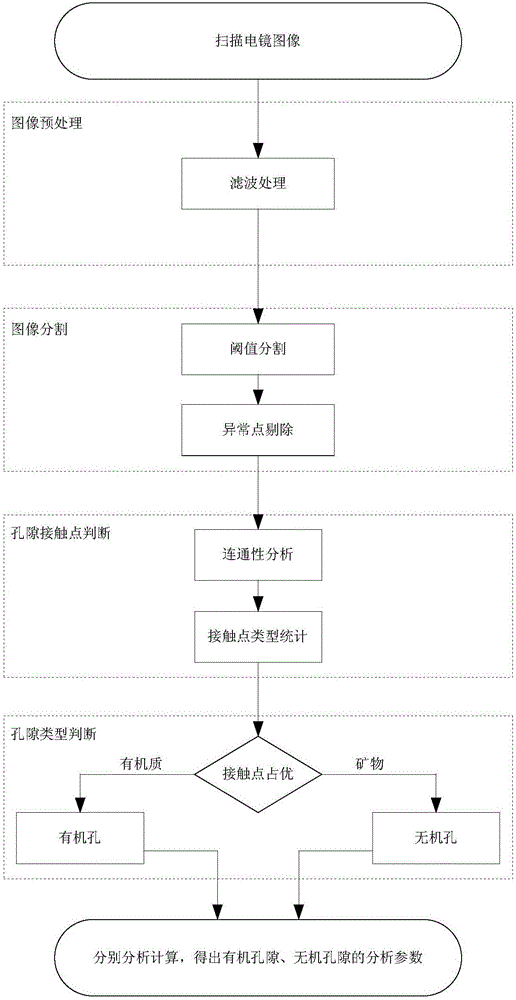Automatic identifying and quantitative analyzing method for organic and inorganic holes in shale electron microscope images
An automatic identification, organic pore technology, applied in the field of oil and gas geological exploration, can solve the problems of lack of general applicability, inability to scan image identification and analysis, and the conclusion is not representative of the whole, to achieve the effect of simple method and high accuracy
- Summary
- Abstract
- Description
- Claims
- Application Information
AI Technical Summary
Problems solved by technology
Method used
Image
Examples
Embodiment 1
[0040] In this embodiment, pore analysis is performed on shale samples, including the following steps:
[0041] 1. SEM image acquisition
[0042] The scanning electron micrograph of shale is shown in Fig. 2a. The image size acquired by SEM is: 4364*3520 (pixels), each pixel represents 5 nm. That is, the size of the scanning area is 21.82 um in length and 17.60 um in width. In order to better show the details of the image, Fig. 2b is an enlarged view of the SEM image of shale. Scanning does not require the model of the instrument itself. The size of the image acquired by the SEM is not limited, and the pixels in the x-direction and y-direction can be of any value. Likewise, each pixel size is unlimited. The scanning signal can come from secondary electrons or backscattered electrons.
[0043] 2. Image preprocessing
[0044] It mainly includes image filtering processing. We use non-local mean filtering, where the image sub-block is 3*3, and smooth the image. Figure 3 a i...
PUM
 Login to View More
Login to View More Abstract
Description
Claims
Application Information
 Login to View More
Login to View More - R&D
- Intellectual Property
- Life Sciences
- Materials
- Tech Scout
- Unparalleled Data Quality
- Higher Quality Content
- 60% Fewer Hallucinations
Browse by: Latest US Patents, China's latest patents, Technical Efficacy Thesaurus, Application Domain, Technology Topic, Popular Technical Reports.
© 2025 PatSnap. All rights reserved.Legal|Privacy policy|Modern Slavery Act Transparency Statement|Sitemap|About US| Contact US: help@patsnap.com



